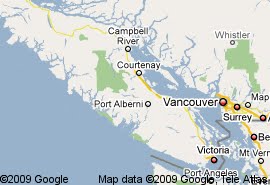Researchers link toxic element to violent behavior
Read more: http://www.dailymail.co.uk/sciencetech/article-2256847/Did-outlawing-leaded-gasoline-cause-crime-rate-drop-Researchers-link-toxic-chemical-violent-behavior.html#ixzz2KzbdBBtM
Follow us: @MailOnline on Twitter | DailyMail on Facebook
A growing body of research could explain why crime rates spiked in the 1980s and 1990s and then dramatically dropped in the 2000s.
A new study links leaded gasoline to violent crime rates in six cities.
High lead levels have long been known to cause birth defects, lower intelligence and hearing problems - but now researchers are beginning to find that it also causes high levels of aggression.
Tulane University toxicologist Howard W. Mielke says high levels of lead exposure in children in the 1960s and 1970s resulted in a dramatic uptick in crime two decades later.
Deadly: New research suggests the spike in violent crime in the 1980s and 1990s was due to the levels of lead pumped into the air by burning leaded gasoline
When the use of leaded gasoline declined in the 1980s, crime rates dropped off at corresponding rates.
Mielke found that in all six cities - Atlanta, Chicago, Indianapolis, Minneapolis, New Orleans, and San Diego - every one percent increase in the number of tons of lead released into the atmosphere resulted in a half percentage point increase in the aggravated assault rate 22 years later.
Each metric ton of lead released into the atmosphere, Mielke calculated, resulted in an increase of 1.59 aggravated assaults per 100,000.
The results were millions more shootings, stabbings and beatings, the professor says.
The data was able to explain 90 percent of the rise and fall of crime rates in the cities studied.
The link between lead and violence is relative new, as well.
Correlation: This graph shows that in all six cities studies, the lead levels in the atmosphere (red line) corresponds closely with aggravated assault rates (blue line)
Dr Herbert Needleman, a University of Pittsburgh researcher, conducted a 1996 study that showed that children with high lead levels were much more likely to exhibit aggressive behavior than those with normal levels.
A 2002 study showed that youths had been arrested had far higher levels of lead in their bones, on average, than their non-delinquent peers.
Mother Jones writer Kevin Drum reports that the leaded gasoline theory is the only explanation for the dramatic rise and fall of violent crime across the country.
Rudy Giuliani is credited with lowering crime rates in New York thanks to aggressive policing and revolutionary tactics.
Crime rates in the city dropped 75percent between the 1990s and 2010.
Recovery: Crime rates are at their lowest levels in decades - and one researcher says it's declining lead levels - not stepped up policing - that has brought down violence in large cities
But, Drum points out, it dropped by similar rates all over the nation - 70 percent in Dallas, 74 percent in Newark, 79 percent in Los Angeles.
All of those cities stepped up enforcement, but never had 'revolutionary' leaders to combat crime, Drum says.
The study, published in August in the journal Environmental International, is one of several pieces of research dating back to 2000 that ties leaded gasoline to crime.
General Motors developed a lead additive for gasoline to prevent engine knock in the 1920s. The most popular additive was tetraethyllead, which soon became nearly universal.
By the 1970s, cars were being made with catalytic converters, which were incompatible with leaded gasoline.
The government also began taxing the fuel more heavily over pressure from environmental advocates, who cited growing research that showed the additive was a neurotoxin tied to birth defects.
Leaded gas was quickly phased out by the 1980s. It was banned for use in vehicles on U.S. roadways in 1996.
It is still in use - but only in race cars, piston-powered airplanes and some off-road vehicles.
Read more: http://www.dailymail.co.uk/sciencetech/article-2256847/Did-outlawing-leaded-gasoline-cause-crime-rate-drop-Researchers-link-toxic-chemical-violent-behavior.html#ixzz2KzbIj4ox
Follow us: @MailOnline on Twitter | DailyMail on Facebook
Did outlawing leaded gasoline cause the crime rate to drop? Researchers link toxic chemical to violent behavior | Mail Online
http://www.dailymail.co.uk/sciencetech/article-2256847/Did-outlawing-leaded-gasoline-cause-crime-rate-drop-Researchers-link-toxic-chemical-violent-behavior.html

No comments:
Post a Comment